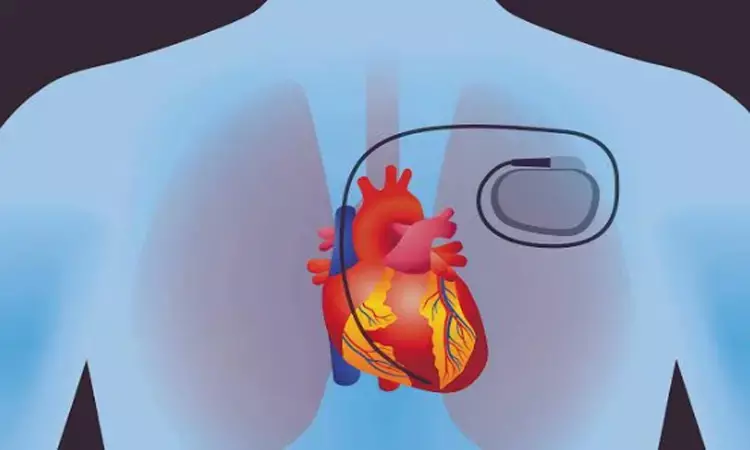- Home
- Medical news & Guidelines
- Anesthesiology
- Cardiology and CTVS
- Critical Care
- Dentistry
- Dermatology
- Diabetes and Endocrinology
- ENT
- Gastroenterology
- Medicine
- Nephrology
- Neurology
- Obstretics-Gynaecology
- Oncology
- Ophthalmology
- Orthopaedics
- Pediatrics-Neonatology
- Psychiatry
- Pulmonology
- Radiology
- Surgery
- Urology
- Laboratory Medicine
- Diet
- Nursing
- Paramedical
- Physiotherapy
- Health news
- Fact Check
- Bone Health Fact Check
- Brain Health Fact Check
- Cancer Related Fact Check
- Child Care Fact Check
- Dental and oral health fact check
- Diabetes and metabolic health fact check
- Diet and Nutrition Fact Check
- Eye and ENT Care Fact Check
- Fitness fact check
- Gut health fact check
- Heart health fact check
- Kidney health fact check
- Medical education fact check
- Men's health fact check
- Respiratory fact check
- Skin and hair care fact check
- Vaccine and Immunization fact check
- Women's health fact check
- AYUSH
- State News
- Andaman and Nicobar Islands
- Andhra Pradesh
- Arunachal Pradesh
- Assam
- Bihar
- Chandigarh
- Chattisgarh
- Dadra and Nagar Haveli
- Daman and Diu
- Delhi
- Goa
- Gujarat
- Haryana
- Himachal Pradesh
- Jammu & Kashmir
- Jharkhand
- Karnataka
- Kerala
- Ladakh
- Lakshadweep
- Madhya Pradesh
- Maharashtra
- Manipur
- Meghalaya
- Mizoram
- Nagaland
- Odisha
- Puducherry
- Punjab
- Rajasthan
- Sikkim
- Tamil Nadu
- Telangana
- Tripura
- Uttar Pradesh
- Uttrakhand
- West Bengal
- Medical Education
- Industry
Cardiac pacing- New hope for reflex syncope patients, finds study

The benefit of cardiac pacing in patients with severe recurrent reflex syncope and asystole induced by tilt testing has not been established. In a study published in European Heart Journal, Brignole et al have shown that in patients above 40 years of age, affected by severe recurrent reflex syncope and tilt-induced asystole, dual-chamber pacemaker with closed loop stimulation (CLS) is highly effective in reducing the recurrences of syncope.
An estimated 50% of the general population will have a syncopal event at some point in life, most frequently caused by vasovagal reflex. Although there is a rationale for cardiac pacing in the dominant cardioinhibitory forms of reflex syncope, but the benefit of pacing in these has not been established. Therefore, the 2017 American guidelines for syncope did not recommend pacing when asystolic syncope is diagnosed by tilt testing. In contrast, the 2018 European guidelines recommended pacing as Class IIb indication.
Improvement of pacemaker design such that pacing starts during the pre-syncopal phase and counters the fall in blood pressure to maintain cardiac output and prevent syncope can serve as a novel strategy. Pacemakers with rate-responsive CLS system serve this purpose. CLS system continuously analyses trends of right ventricular intracardiac impedance during systolic phases to gather information about the speed of myocardial contraction and adjust pacing rate accordingly. Pacemakers with CLS have shown the ability to institute a rapid pacing rate at the time of impending tilt-induced syncope. This early pacemaker response partly sustained cardiac output and blood pressure, preventing or delaying cardioinhibitory vasovagal syncope despite a concomitant vasodepressor component.
Brignole et al randomly assigned patients aged 40 years or older with at least two episodes of unpredictable severe reflex syncope during the last year and a tilt-induced syncope with an asystolic pause longer than 3 seconds, to receive either an active (pacing ON; 63 patients) or an inactive (pacing OFF; 64 patients) dual-chamber pacemaker with closed loop stimulation (CLS).
The primary endpoint was the time to first recurrence of syncope. After a median follow-up of 11.2 months, syncope occurred in significantly fewer patients in the pacing group than in the control group [16% vs. 53%; hazard ratio, 0.23; P = 0.00005]. The estimated syncope recurrence rate at 1 year was 19% (pacing) and 53% (control) and at 2 years, 22% (pacing) and 68% (control). A combined endpoint of syncope or presyncope occurred in significantly fewer patients in the pacing group [37% vs. 63%; hazard ratio, 0.44; P = 0.002]. The number needed to treat was 2.2. Minor device-related adverse events were reported in five patients (4%).
In conclusion, in patients aged 40 years or older affected by severe recurrent vasovagal syncope and tilt-induced asystole, dual-chamber pacemaker with CLS is highly effective in reducing the recurrences of syncope.
source: Michele Brignole, Vincenzo Russo, Francesco Arabia, et al for the BioSync CLS trial Investigators, Cardiac pacing in severe recurrent reflex syncope and tilt-induced asystole, European Heart Journal, , ehaa936,
complete article available at: https://doi.org/10.1093/eurheartj/ehaa936
MBBS, MD , DM Cardiology
Dr Abhimanyu Uppal completed his M. B. B. S and M. D. in internal medicine from the SMS Medical College in Jaipur. He got selected for D. M. Cardiology course in the prestigious G. B. Pant Institute, New Delhi in 2017. After completing his D. M. Degree he continues to work as Post DM senior resident in G. B. pant hospital. He is actively involved in various research activities of the department and has assisted and performed a multitude of cardiac procedures under the guidance of esteemed faculty of this Institute. He can be contacted at editorial@medicaldialogues.in.
Dr Kamal Kant Kohli-MBBS, DTCD- a chest specialist with more than 30 years of practice and a flair for writing clinical articles, Dr Kamal Kant Kohli joined Medical Dialogues as a Chief Editor of Medical News. Besides writing articles, as an editor, he proofreads and verifies all the medical content published on Medical Dialogues including those coming from journals, studies,medical conferences,guidelines etc. Email: drkohli@medicaldialogues.in. Contact no. 011-43720751


